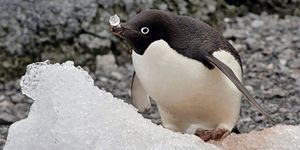Saturn-Like Exoplanet Sports More Atmospheric Water Than Initially Thought
Astronomers search far and wide for answers to the countless questions we have about our universe. In some cases, astronomers study the same astronomical object more than once, but with different observational equipment each time.
While it may seem counter-productive to gawk at the same thing repeatedly, one of NASA’s most recent discoveries involving an exoplanet residing more than 700 light-years away in the constellation Virgo underscores how this isn’t the case.
Image Credit: Artist's Concept: NASA, ESA, G. Bacon and A. Feild (STScI), and H. Wakeford (STScI/Univ. of Exeter)
The exoplanet, dubbed WASP-39b, appears much like Saturn at first glance. But it’s entirely different in many respects, like being tidally-locked to its host star and residing 20 times further from its host star than the Earth is from the Sun.
A closer observation of WASP-39b made with both the Hubble and Spitzer Space Telescopes, on the other hand, exposes how the distant exoplanet’s atmosphere contains three times more water vapor than Saturn’s does.
Citing NASA’s official statement, the significance of these findings can’t be written off. They paint a detailed picture of how WASP-39b formed, and more importantly, they can help planetary scientists better understand planet formation in our own solar system.
“We need to look outward so we can understand our own solar system,” said Hannah Wakeford of the Space Telescope Science Institute in Baltimore, Maryland, and the University of Exeter in Devon, United Kingdom. “But exoplanets are showing us that planet formation is more complicated and more confusing than we thought it was. And that’s fantastic!”
Related: Distant Neptune-like exoplanet sports atmospheric water
Based upon these results, planetary scientists gather that WASP-39b formed further away from its host star than initially thought and that it drifted closer to the host star over time.
“WASP-39b shows exoplanets can have much different compositions than those of our solar system,” added David Sing of the University of Exeter in Devon, United Kingdom. “Hopefully this diversity we see in exoplanets will give us clues in figuring out all the different ways a planet can form and evolve.”
Related: So how old are Saturn's rings anyway?
Admittedly, astronomers have barely scratched the surface of WASP-39b, and there are still countless more exoplanets all around us that we could learn from. Fortunately, the upcoming James Webb Space Telescope will help us see these objects in another light, potentially opening the door to more discoveries.
Source: NASA









